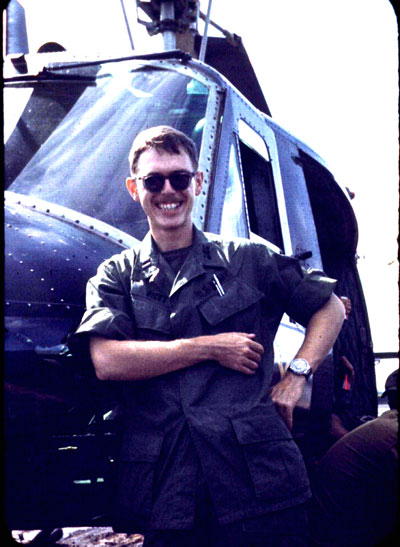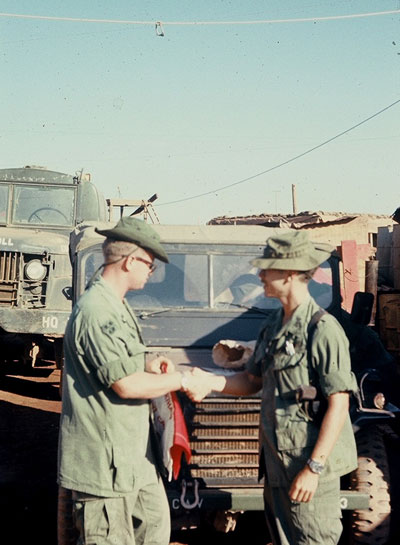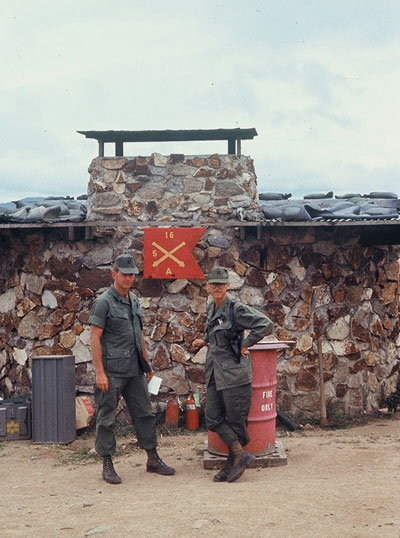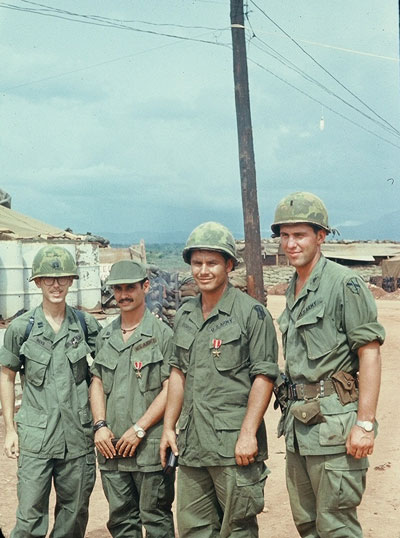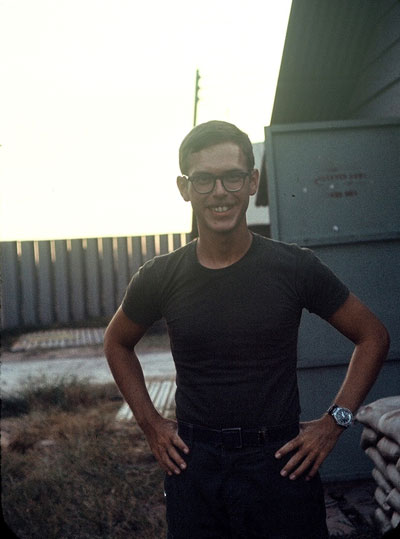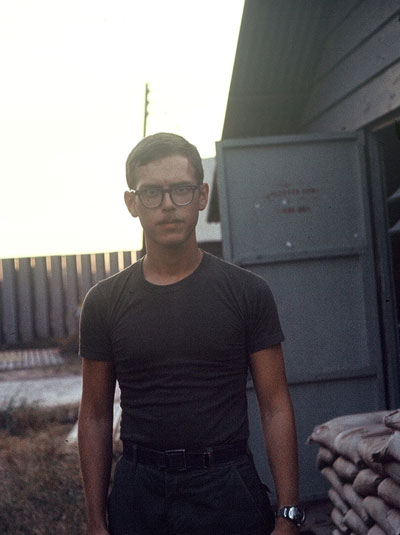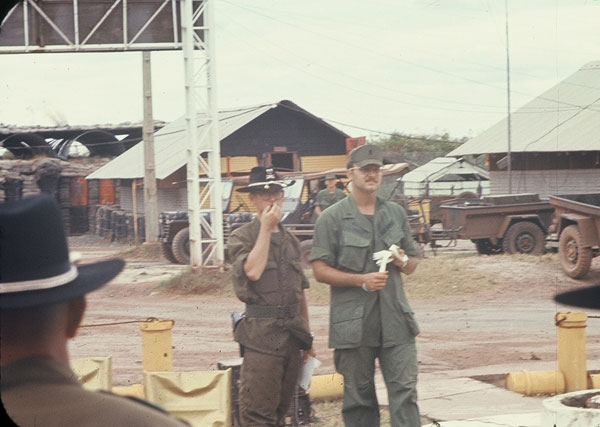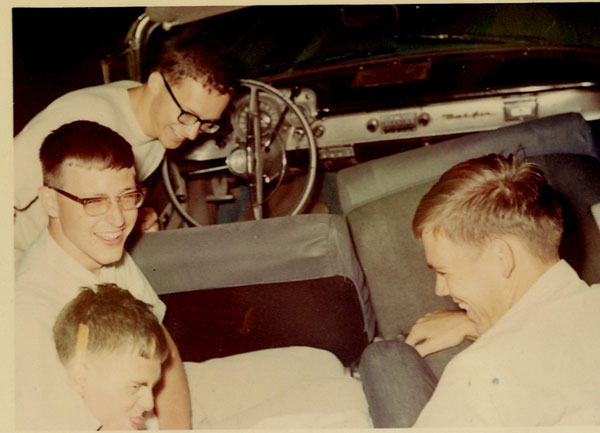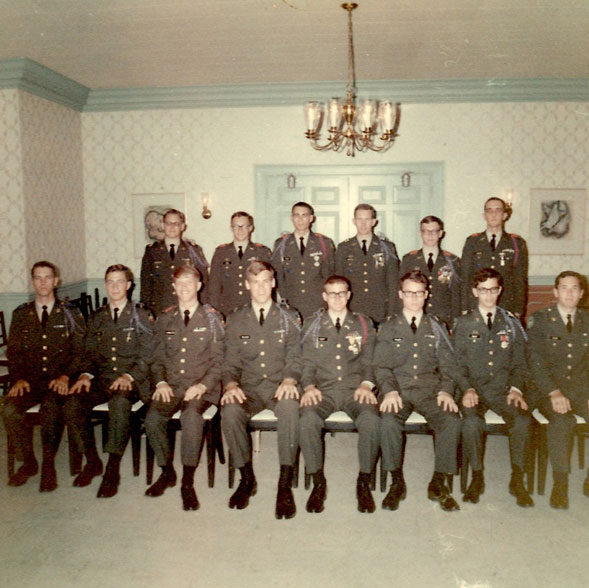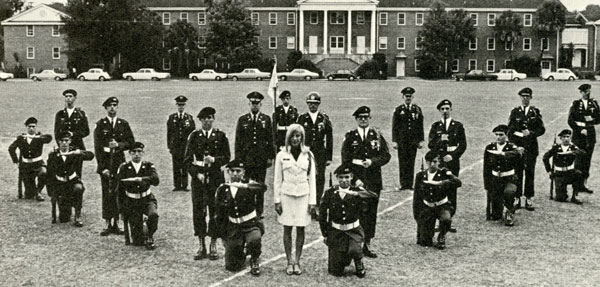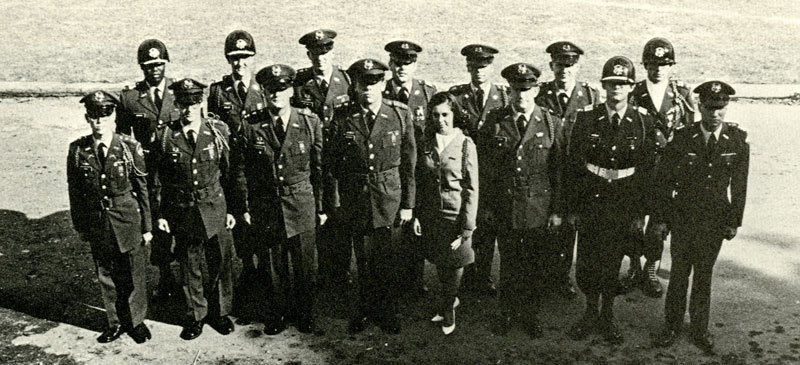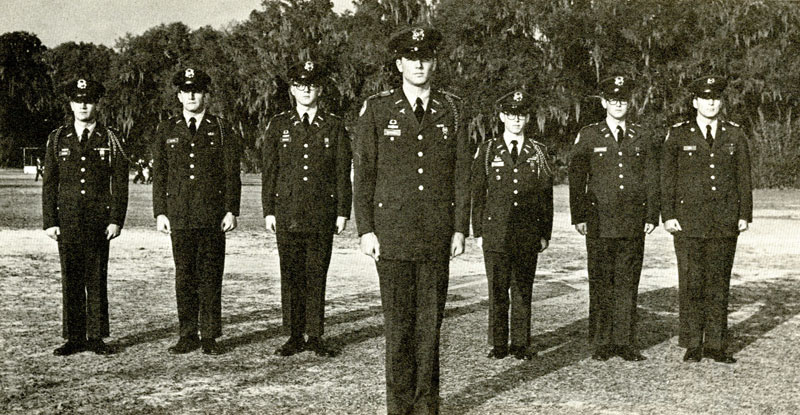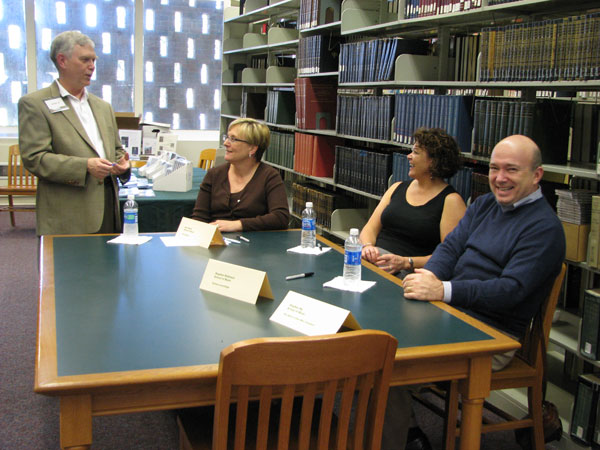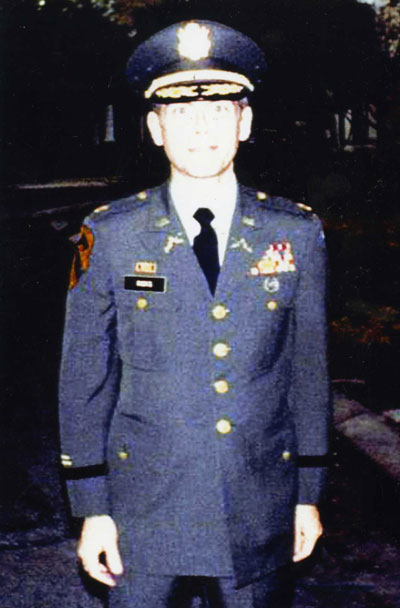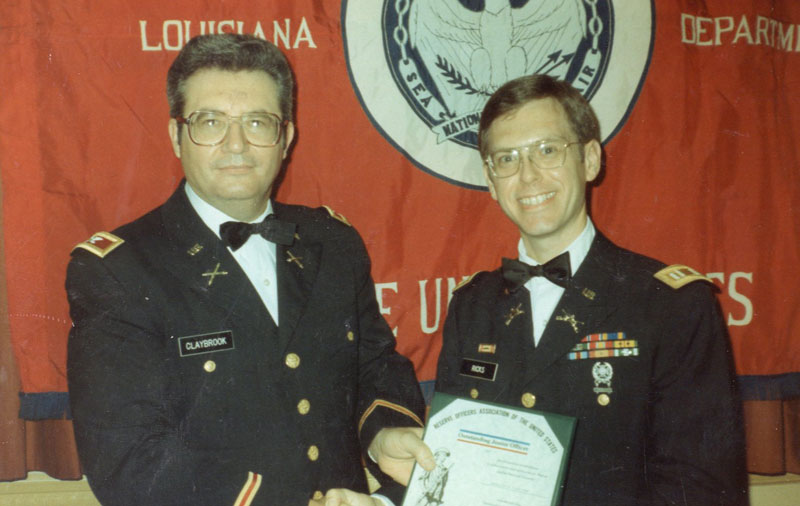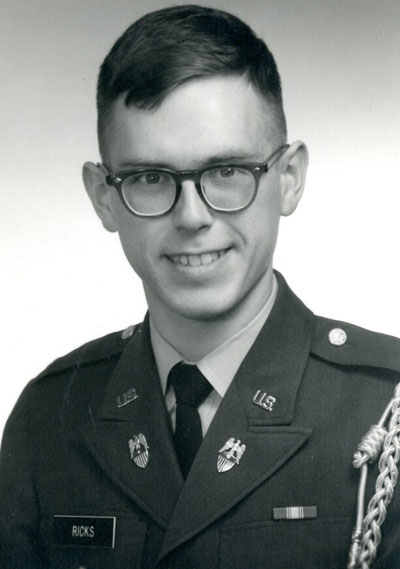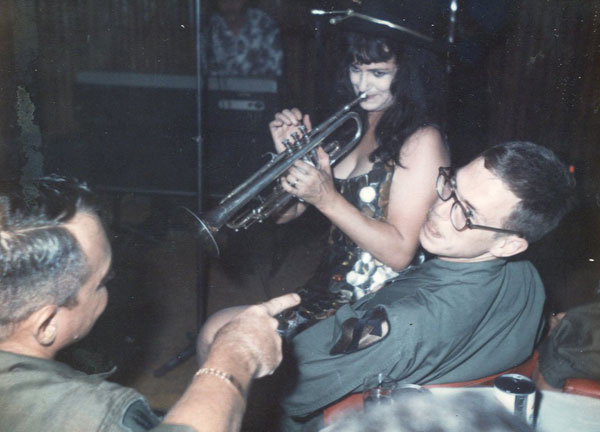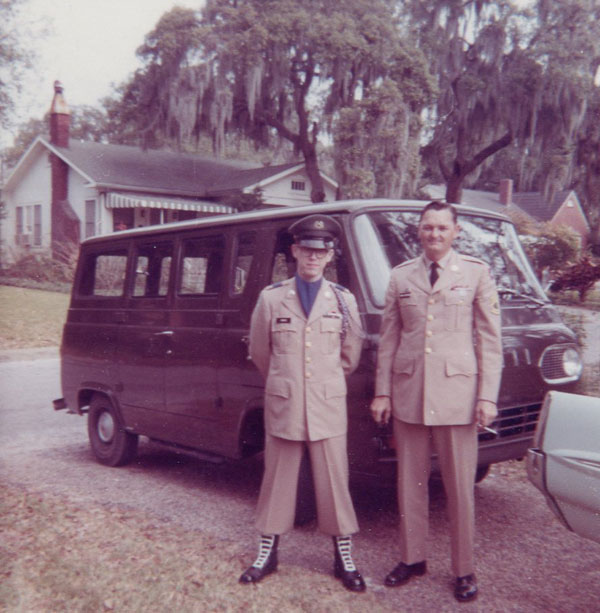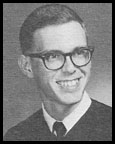Class of: 1968
Brick: yes
On Sunday, June 2, 1968, I graduated from Stetson and commissioned in the Army as a Second Lieutenant of the armor branch. As part of my Army scholarship that enabled me to complete my education, I was offered my commission in the Regular Army, which I accepted. Practically speaking, that commission meant that I had to report right away to my first duty station, Ft. Jackson, in Columbus, South Carolina, by Wednesday! The posting at Ft. Jackson was to an infantry training unit preparing young men to go as replacements to Vietnam. Out of the platoon for which I had responsibility, all but two went to Southeast Asia. The others were only 17 years old and were sent to Germany. I had not, as yet, been to my officer’s basic course and was a green “rookie” as well as being a “tread head” armor guy in an infantry outfit. Fortunately for me, I had some experienced people around me who gave me practical lessons about leadership and care of the troops, which stood me in good stead in years to come.
When the government’s new fiscal year rolled around in September of 1968 with a fresh batch of money, I got orders for temporary duty at Ft. Knox, Kentucky, for Armor Officer’s Basic and the Ranger School at Ft. Benning, Georgia. My next move was to Germany where I joined the 14th Cavalry Regiment (vehicles, not horses) patrolling the border between Communist East Germany and the western Federal Republic of Germany. During this duty I could look directly into the Communist countryside and see directly the difference the impact of that regime had on the German people east versus west. In 1969, I was selected to be an aide-de-camp for a general. (Lest you think that more glamorous than it really is – I was the guy carrying the briefcases and making sure the helicopter is ready). Nonetheless, it was a great practical education on how the big picture works. By the spring of 1970, I knew two things were going to happen: I was to be promoted to captain and I was going to Vietnam. On the way to Asia, the Army sent me to Panama for the jungle warfare course. Frustratingly, this course was oriented to light infantry tactics, not armor. So, I carried a pack up and down the jungle-covered slopes of the Canal Zone.
Before I left Germany I had asked my boss for advice on what sort of unit I should seek assignment to in the war zone. He advised getting in a unit that employed helicopters. My request for duty with the famous 1st Cavalry Division went through, and I was sent to be a staff officer in the 1st Squadron, 9th Cavalry, the division’s reconnaissance squadron . This was a helicopter cavalry unit that notably wore the black Stetson hats as portrayed rather flamboyantly in the film Apocalypse Now. But I followed the advice I had received to be in a helicopter unit AND, fittingly, I got to wear a Stetson. My myopic vision prevented my becoming an aviator, but it seemed I was in the air a lot anyway. I was pleased and astonished to be told I had earned an Air Medal in all that flying. Mid way through my tour of duty in Vietnam, I was offered the chance for a command of my own. This was a ground cavalry unit far away in the Central Highlands near An Khe. As a Regular, this was a prime assignment. After I took command of Troop C, 1st Squadron, 10th Cavalry, I discovered that the captain who had the command prior to me had been killed by his own soldiers. This was a plot twist for which I was not prepared, but there was no going back. ROTC , nor any other training, had not covered this leadership challenge in class, so I had to make up the solution as I went along. It seemed to work out okay, and I went stateside standing up in July 1971.
Troop C’s work with the Army of the Republic of Vietnam resulted in the awarding of a Vietnamese Gallantry Cross with Palm and Silver Star in addition to a US Bronze Star and commendation medals. I had four more years of active service at Ft Hood, Texas. Being around soldiers was probably good therapy for me to process the war experiences and to get used to being back in the US again. There were more staff jobs as well as another company command billet before I left active duty in 1975. At separation, the procedure was to either check a box asking for a Reserve commission or not. I did so “just in case”. “Just in case” resulted in another eighteen years of service in the reserve components while working a “day job” in civilian business. There were the usual staff details but also three more commands as well as duties as an Inspector General. In 1993, I was retired with a total of 25 years commissioned service.
By the time of this writing in 2015, I am also retired from my civilian profession as a corporate consultant and educator in the insurance and financial services industry. An ancillary benefit of my Army service was to provide material for two novels I authored: “Revelation, A Novel of the Vietnam War” and “Trusting Appearances”. The National Veterans Art Museum is here in Chicago and has some of my wartime photos in their collection. From time to time I speak to groups about the war at the museum and at universities and high schools.
